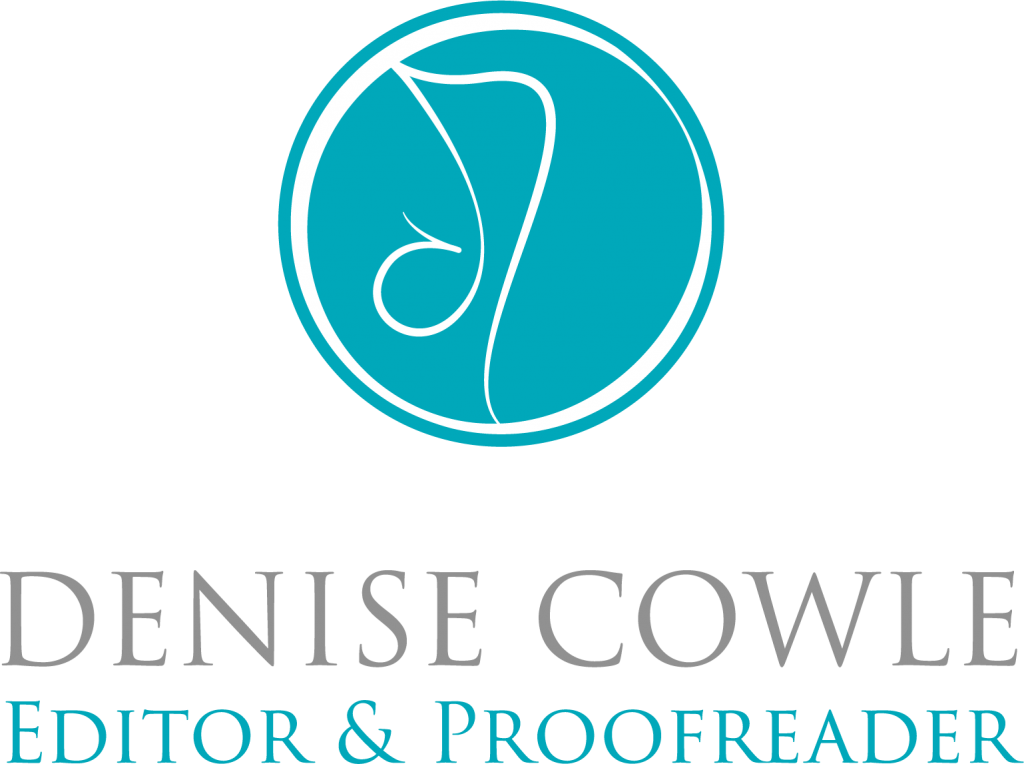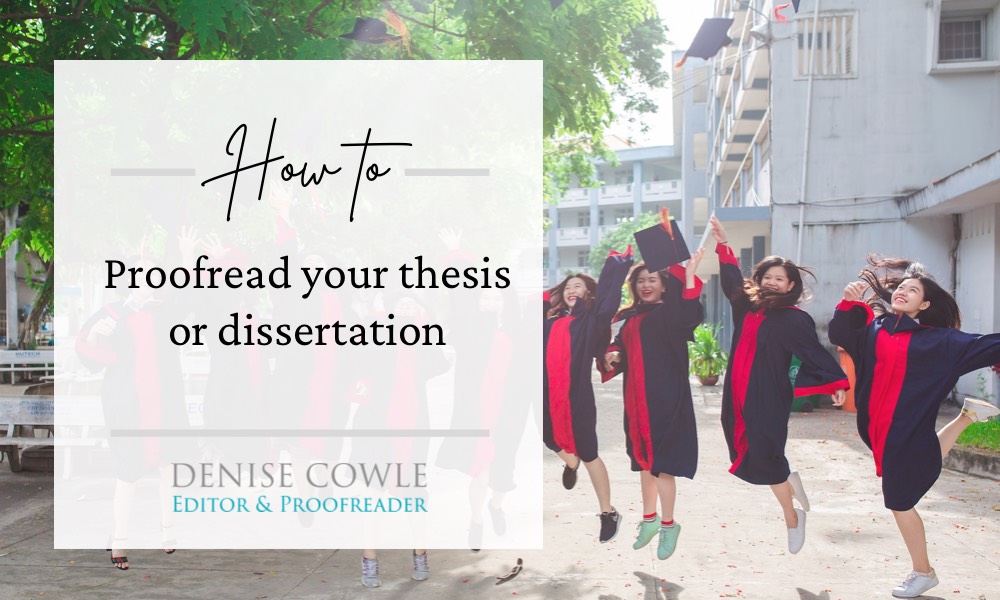Glasgow University Cloisters, photo credit _skynet
Your dissertation or thesis is the result of many, many hours of research, reading, revising and writing. It’s the final piece of work towards your qualification, whether it’s your first degree, master’s or PhD.
It goes without saying that your finished dissertation should be the best it can possibly be, and that absolutely includes how it’s presented.
I’m going to work on the assumption that your content is amazing: you’ve carried out thorough research and extensive, relevant reading; you’ve presented your data in a clear and logical way; and you’ve constructed an impressive argument based on these foundations.
The last thing you want, then, is for your examiner to be distracted from your brilliance by spelling and grammatical errors, inconsistencies of layout and formatting, and chaotic referencing.
It is definitely worth taking the time to proofread your dissertation – there are many ways of improving it. If writing isn’t one of your strengths, using a professional proofreader can be a worthwhile investment, and if English isn’t your first language, or you have a learning difference such as dyslexia, then your institution may require their input prior to submission.
Here’s a rundown of 12 things you can look at to make sure your dissertation is the best it can possibly be.
1 Give yourself enough time
Once you’ve finished writing, try to give yourself a break from it for a few days before going back to proofread. This gives your brain a chance to ‘forget’ what you’ve been writing and reduces the risk of your anticipating what you expect to read, rather than what’s actually on the page.
If you’re using a professional proofreader, don’t wait until the last minute to find one! Good proofreaders and editors can be booked up months ahead, so plan ahead and make contact in plenty of time so they can book you in. Remember that they won’t read your work at a ‘normal’ pace; they will work through slowly to make sure they catch all the small errors that you skip over. Don’t expect to get a good, professional job done if you want your 40,000 words to be turned round in 24 hours!
Expect to have a list of comments and queries to work through when your proofreader returns your work, so factor this in to your schedule. And don’t forget to allow yourself time for printing and binding, if required.
2 Overall structure
Look at the overall structure of your work. Does it have an introduction which summarises what you’ve done? Is there a logical progression through the sections? Remember all that cutting and pasting you did when you decided to change things around? Make sure that it hasn’t affected the flow of your argument. Check that you haven’t mistakenly copied and pasted, rather than cut and pasted, and accidentally left behind a copy of the original paragraph where it no longer belongs or makes sense.
3 Formatting
Check your headings and subheadings are all styled the same way – are you using title case or sentence case? If you don’t know the difference, the American Psychological Association (APA) has a helpful blog post. APA is an author-date referencing system widely used in academic publishing.
Is the section numbering in order? This may sound basic, but it’s another thing that can go wrong when you’re moving chunks of text or data around.
Don’t forget to check the captioning of figures and tables: Is the numbering logical and systematic? Are they in the correct order? Are they referred to by this number in the body of the text? Do the captions accurately reflect the contents?
4 Consistency
Are you consistent in how you use capitals and hyphenation? Do you treat numbers in the same way throughout your work? Are you using British English or American English? Have you used italics correctly? (This is very important in Scientific, Technical, Engineering and Medical writing, where there are strict conventions about the use of italics; for example, in nomenclature.)
One way of ensuring consistency is to build a style sheet for your work as you go. This is a simple but effective way of recording your decisions about all these areas, which you can refer to as needed. Have a look at my blog post on What is a Style Sheet? for more information on how to create your own.
My colleague, Louise Harnby, has created a Student Proofreading Toolkit that contains useful Find and Replace strings and wildcards to help you easily tidy up things such as double spaces, removing unnecessary spaces before punctuation, and finding paragraphs without closing punctuation. This is an excellent resource which will make quick work of removing all the instances of these errors, and many others, in your work.
5 Spelling, punctuation and grammar
By all means run your spelling and grammar checker, but please don’t rely on it. It will catch some obvious errors, but miss many, many others. And sometimes it’s just plain wrong! Don’t believe me? Here’s one suggestion Word gave me recently. I couldn’t resist tweeting about it:
Word, go home. You’re drunk. #spellcheck #amediting pic.twitter.com/dgqZNddYlx
— Denise Cowle, non-fiction editor (@dinnydaethat) August 22, 2016
Spell check won’t pick up homophones – words that sound the same, but which are spelled differently – for example, bear/bare, site/sight or stationery/stationary. Nor will it catch a word that is just wrong – if you type form instead of from, or pacific instead of specific, it won’t detect that as an error.
There are useful techniques that help you to look at your text differently and pick up errors you’d otherwise miss: printing it out onto paper, changing the font and reading aloud, for example. My blog on How to Proofread Your Own Writing has more information on this for you, so be sure to check it out.
6 Acronyms and abbreviations
If you use acronyms, initialisms or abbreviations in your work, the sensible thing to do is write them out in full at their first use and use the acronym after that.
For example, you might first refer to the World Health Organization (WHO) but then use WHO whenever you next mention it.
If you’re writing a thesis of book length, you may want to define an acronym in full the first time it’s used in each chapter, especially if it’s only mentioned in Chapters 2 and 12 – your reader may not remember what it means by the time they reach Chapter 12!
You may want to provide a list of acronyms at the front of your thesis if there are a lot of them. This shouldn’t be included in your word count.
7 Plagiarism
If you use other people’s work in your dissertation but don’t give them full acknowledgement, this is plagiarism. This includes lifting text from the internet – just because something is available on a webpage doesn’t mean you’re free to use it without crediting the author. In effect, you’re passing it off as your own original work.
Plagiarism isn’t limited to uncredited use of text – it also applies to images, tables, charts, graphs and websites. And the information needn’t have been published; if you are using unpublished data – for example from another student’s unpublished thesis or from a lecture – it must still be fully credited and referenced.
Universities check for plagiarism by using software such as Turnitin. Examiners are also skilled at recognising signs that will make them take a closer look at your sources, or lack of them; for example, where the writing style or language use abruptly changes.
In short, plagiarism is taken very seriously and can be a disciplinary offence. Don’t risk it.
8 Referencing system
Make sure you know which referencing system you are expected to use. This varies between institutions, and also between schools withing the same institution, so check you’re using the correct one.
- The author-date system (for example, the Harvard system) uses in-text citations like this (Cowle, 2016) in conjunction with a full reference list, where titles are ordered alphabetically.
- The short-title system uses a note marker in the text and puts the full reference in the equivalent footnote or endnote. When the title is used again, a new note number is inserted in the text, but a much shorter version of the title is listed. This system is often used in the humanities.
- Numbering systems, such as Vancouver and author-number referencing, are frequently used in Science, Technology, Engineering and Medicine (STEM).
The above systems are explained in detail in the Society for Editors and Proofreaders online References course, which will help you learn how to deal with reference systems, explore unfamiliar systems and understand how to correctly reference less typical sources.
9 Make several passes
Be methodical when you approach reviewing your dissertation. Rather than trying to catch every different type of error in one read through, make several passes and focus on one particular aspect each time. Here’s an example of how you could tackle this process:
- Cross check headings, sub-headings and page numbers against the table of contents
- Check figures and tables are in the right order and numbered and captioned correctly
- Check in-text citations match your reference list
- Are you references styled according to your institution’s requirements?
- Have you defined all your acronyms and abbreviations where they first appear?
- Lastly, read through to check spelling, grammar and sense.
10 Get outside help
It always helps to have someone objective read your dissertation. They’ll pick up on the spelling mistakes and other errors which you miss because you’ve read it so often that your brain sees what it expects to see, rather than what’s actually on the page.
But what if your friends and colleagues are also working on their dissertations, or busy with their own lives – will they be able to give your work the time it deserves for that final polish? Are they actually good at spotting errors and inconsistencies? Not everybody is, and this isn’t a job that can be done thoroughly with only a quick skim read.
This may be the point where you decide that you need some professional help in the form of a proofreader. That can be an excellent choice, as it ticks all the boxes you need: someone who is objective, methodical and knowledgeable about punctuation, spelling, grammar and language, generally. You may feel they should have some knowledge of your subject, but that isn’t always necessary.
Your proofreader will tell you how long it will take them, based on your word count, and they will usually also ask to see a sample of your writing to help calculate the time needed and how much it will cost you.
But deciding to ask a professional to work on your thesis raises a very important point, which just happens to be next on this list.
11 Know what your institution allows
Whether or not proofreading of your dissertation is permitted is something you must clarify before any work is done.
You should have the permission of your supervisor before employing a professional proofreader. Many proofreaders will require written confirmation of this, and your supervisor’s contact details, before they will agree to work with you.
There are no hard-and-fast rules about employing a proofreader – it varies between institutions, and within schools: some do not permit any form of third-party assistance; some will allow the use of peer proofreaders only and have a list you can refer to; some have no guidelines at all – so you must consult your supervisor. Failure to check what is permitted could leave you open to an accusation of collusion, so be very clear about what your particular course allows.
12 University language centres
Your university language centre or student support centre can help you if:
- English isn’t your first language
- you have a learning difference such as dyslexia
- you are a native English speaker but find the transition to using academic English challenging.
These centres provide pre-sessional and in-session courses and workshops on English for Academic Purposes or improving your academic writing skills, and they may also keep a list of peer proofreaders who can review your dissertation.
So there you are – twelve tips to help you submit your dissertation in the best shape possible. I hope this has been useful, and that you have a clearer idea of what proofreading a dissertation involves and how to go about it.






